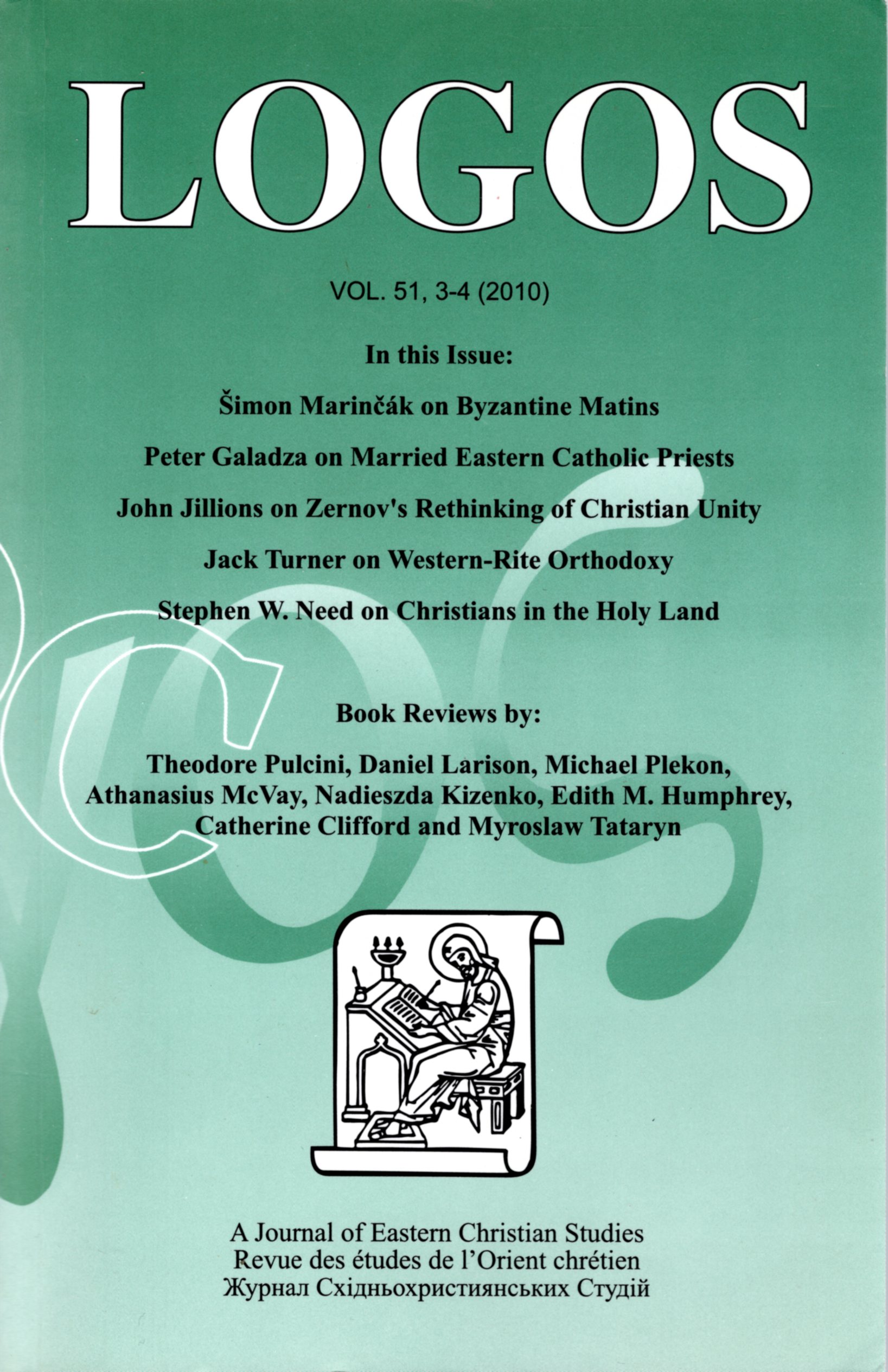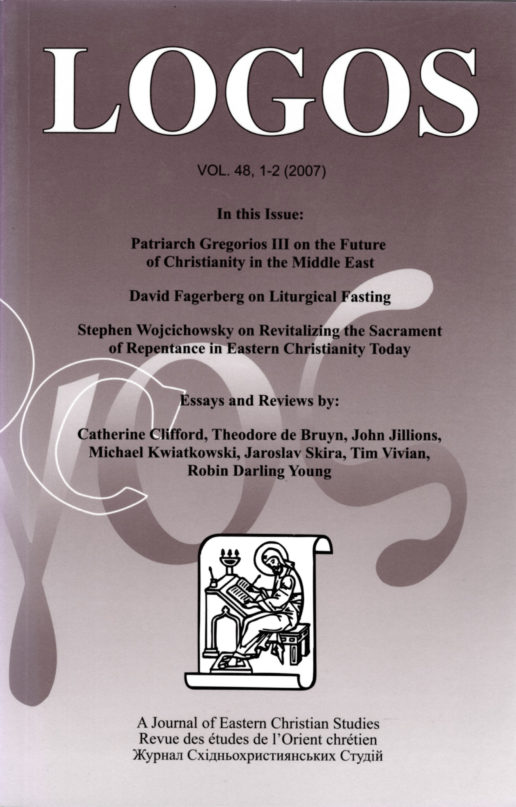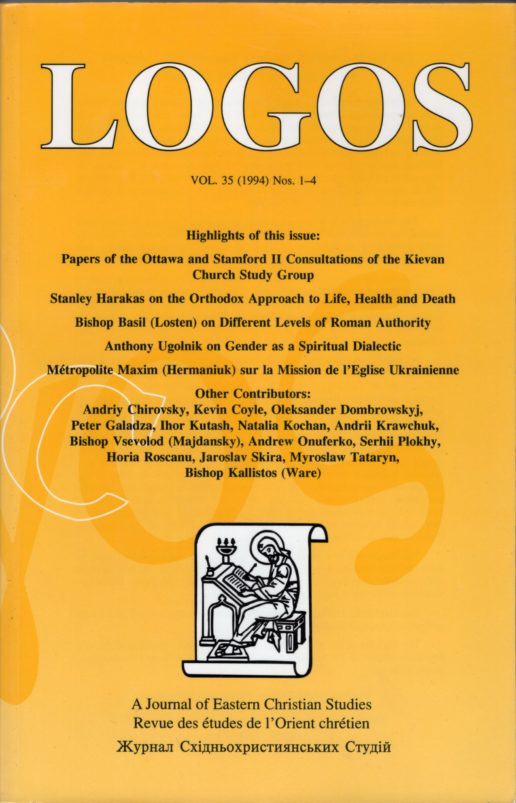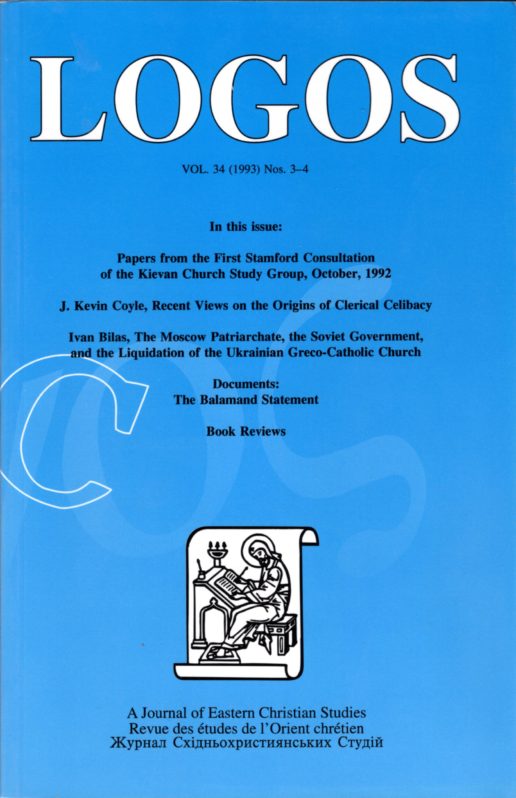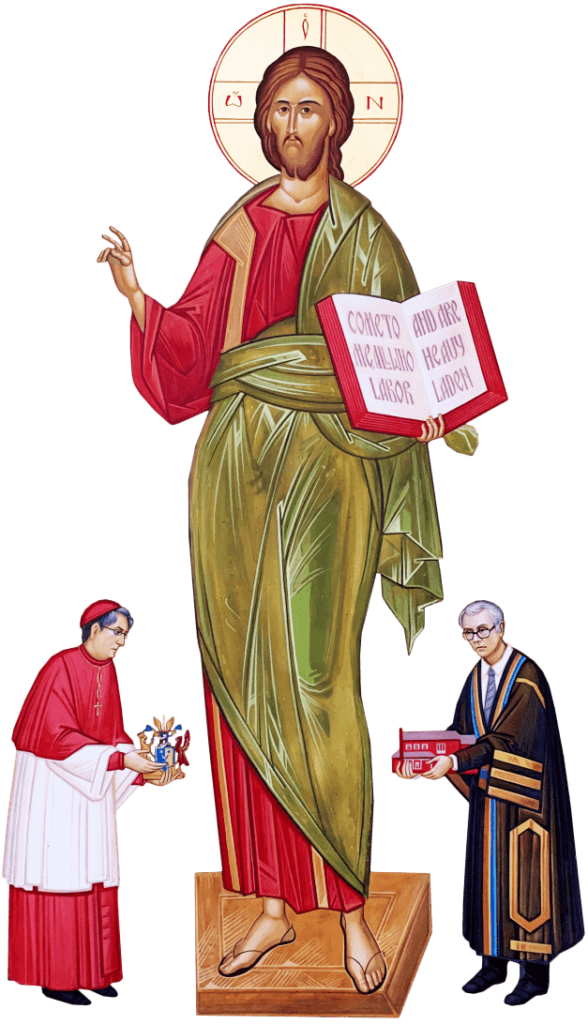Description
Table of Contents (PDF)
Editorial
Married Eastern Catholic Priests: The Continuing Saga of Identifying “Latin” with “Catholic” (PDF sample)
Peter Galadza (219)
Articles
Western-Rite Orthodoxy as a Canonical Problem (PDF sample)
Jack Turner (229)
Abstract
The recent transfer of thousands of Western Christians into Orthodoxy has raised the question of whether being Eastern Orthodox always entails using the East-Roman or Byzantine-Constantinopolitan liturgical tradition exclusively. A number of “Western-rite” parishes have been created, primarily in the Antiochian Orthodox Church in the United States, using modified liturgical forms historically derived from Roman Catholic and Anglican traditions. Must such parishes follow Orthodox canons – for fasting, calculating liturgical time, or determining the length of Lent and what foods may be eaten therein – which always presuppose Byzantine usages, and often explicitly condemn Western practices? Should such canons be observed or modified – and if so, how and by whom? Or should they be rejected for Western-rite communities, and if so, what should replace them and how would such new canonical legislation be generated? The author reviews the Council in Trullo and other relevant legislation, and concludes by suggesting practical changes, but notes that the issues remain complex and require much more sustained and serious reflection.
Резюме
Перехід тисяч західних християн у Православ’я вик-ликав питання, чи завжди бути Східним православним означає використовувати виключно Східно-Римську (Ві-зантійсько-Константинопольську) літургійну традицію. Певне число парафій “Західного обряду”, що були створе-ні переважно в Антіохійській православній Церкві у Спо-лучених Штатах Америки, використовують літургійні форми, які історично походять з Римокатолицької та Англіканської традицій. Чи повинні такі парафії слідувати за Православними канонами у питаннях посту, обрахунку літургійного часу, визначення тривалости Великого посту та яку їжу тоді можна вживати? Адже завжди припус-кається, що потрібно використовувати саме Візантійську традицію, а тому часто західні практики прямо засуджу-ють. Чи слід дотримуватися таких канонів повністю чи в модифікованій формі? Якщо так, тоді хто і як повинен ці зміни вводити? Чи може потрібно їх відкинути в спільно-тах Західного обряду? Якщо так, тоді чим їх замінити, і як тоді буде встановлене таке нове канонічне законодавство? Автор розглядає постанови собору у Трулло та інші відповідні постанови, а завершує пропозиціями практич-них змін, відмічаючи складність даного питання, що вима-гає довшого та більш ґрунтовного дослідження.
Byzantine Matins in Fourteenth-Century (PDF sample)
Akolouthiai Šimon Marinčák (249)
Abstract
After the Latin occupation (1204–1261), Byzantines hoped to restore the former glory and splendour of the Great Church. The monastic rite was adopted as the ordinary Liturgy of the Hours, but the “Sung” Office was sometimes retained for major feasts. Subsequently, a new anthology emerged, the Akolouthia, containing a selection of the chants for the soloist and choir. In the fourteenth-fifteenth centuries radical innovations in the music itself also appeared: the addition of meaningless syllables into the liturgical texts; the lengthening and elaboration of chants for the all-night vigil’s ordinary; and an increased attention to purely musical techniques and new attitudes toward their application during worship. These innovations were not liturgically neutral, as they diminished the traditional one-to-one correspondence between words and melody. The reasons for such innovations are subject to various hypotheses, and are reviewed in the present study. Nonetheless, the music, as well as the additions, show continuity with previous traditions.
Резюме
Після латинської окупації (1204–1261), візантійці на-діялися відновити колишню славу та велич Великої Церк-ви. Монастирський обряд був прийнятий за звичайне Цер-ковне правило, але “співані” (катедральні) служби були збережені за більшими церковними святами. Згодом з’яви-лася нова збірка, Аколуфія, яка містила вибрані співи для соліста з хором. У 14–15 століттях у самих піснеспівах з’явилось нове радикальне нововведення: додавання скла-дів, які не мали значення у літургійні тексти; видовжування й ускладнення піснеспівів для нез-мінних частин Всеношної служби; збільшення уваги до суто музичних аспектів і нових способів їх застосування у богослуженні. Ці нововведення не були літургійно нев-тральними, оскільки вони зменшили традиційне тісне співвідношення між словом та мелодією. Існують різні гі-потези щодо причин виникнення цих нововведень, і вони розглянуті у цьому дослідженні. Тим не менше, піснеспіви як і додатки, вказують на тяглість з попередніми традиція-ми.
The Servant Church: Nicholas Zernov’s Rethinking of Christian Unity (PDF sample)
John A. Jillions (307)
Abstract
Nicholas Zernov’s thinking on Orthodoxy and ecumenism is re-examined thirty years after his death. Zernov, along with Sergius Bulgakov, Nicholas Afanasiev, Lev Zander, Anton Kartashev, and Paul Evdokimov, advocated an approach to ecumenism somewhat at odds with the Orthodox “mainstream” as represented by Georges Florovsky. Critics such as Alexander Schmemann, John Meyendorff, and Paul Schneirla dismissed Zernov’s ideas as unworkably romanticized and doctrinally suspect, but others, including Kallistos Ware, offer a more positive assessment of Zernov’s proposal for limited intercommunion between Catholics and Orthodox. The author, citing Maria Skobtsova, concludes by arguing that Zernov’s proposal for intercommunion will only work if Orthodox Christians take the lead in living out a radical kenosis and seeking to be the first servants of unity.
Резюме
Стаття пропонує переосмислення підходу Николая Зернова щодо православ’я та екуменізму тридцять років після його смерти. Н. Зернов, а також Сергій Булгаков, Николай Афанас’єв, Лев Зандер, Антон Карташов та Павло Євдокімов обстоювали дещо відмінний від право-славного “мейнстріму” Георгія Флоровського підхід до екуменізму. Александр Шмеман, Йоан Меєндорф та Павло Шнерла відкидали ідеї Зернова як нездійсненно ідеаліс-тичні та доктринально підозрілі, натомість інші, включно з Калістом Уером дають більш позитивну оцінку пропозиції Зернова щодо обмеженого сопричастя між католиками та православними. У висновку, цитуючи Марію Скобцову, автор твердить, що сопричастя пропоноване Зерновим буде можливим, лише в тому випадку, коли православні християни візьмуть на себе ініціятиву в переживанні ради-кального кенозису і прагнутимуть стати першими слугами єдности.
Notes, Essays, Lectures
Identity, Fracture and Exodus: The Disappearing Christians of the Holy Land (PDF sample)
Stephen W. Need (331)
A Proposal for the Restoration of Gradual Initiation into the Church Culminating in Baptism-Chrismation During a Parish Sunday Liturgy (PDF sample)
Peter Galadza (341)
Byzantines, Ottomans, and Latins: Reconsidering the Politics (PDF open access article)
Daniel Larison (355)
Book Reviews
C. Paul Schroeder, St. Basil the Great: On Social Justice
William Mills (367)
Alexander Schmemann, Journal (1973–1983)
Michael Plekon (369)
Aidan Nichols, Rome and the Eastern Churches: a Study in Schism
Adam A.J. DeVille (373)
Frank J. Coppa, Politics and the Papacy in the Modern World
Athanasius McVay (376)
Hans van Loon, The Dyophysite Christology of Cyril of Alexandria
Lois Farag (380)
Zoe Knox, Russian Society and the Orthodox Church: Religion in Russia After Communism
Nadieszda Kizenko (384)
Richard Price and Mary Whitby, eds., Chalcedon in Context Church Councils 400–700
Stephen W. Need (389)
Norman Russell, Fellow Workers with God: Orthodox Thinking on Theosis
Edith M. Humphrey (392)
Stefanos Alexopoulos, The Presanctified Liturgy in the Byzantine Rite: A Comparative Analysis of Its Origins, Evolution, and Structural Components
Peter Galadza (396)
Jaroslav Z. Skira and Michael S. Attridge, eds., In God’s Hands: Essays on the Church and Ecumenism in Honour of Michael A. Fahey, S.J.
Catherine E. Clifford (401)
Lucian N. Leustean, ed. Eastern Christianity and the Cold War, 1945–91
Lucien J. Frary (404)
Vlad Naumescu, Modes of Religiosity in Eastern Christianity: Religious Processes and Social Change in Ukraine
Myroslaw Tataryn (407)
Irfan A. Omar, ed. A Muslim View of Christianity: Essays on Dialogue by Mahmoud Ayoub
Theodore Pulcini (411)
Briefly Noted (419)
Contributors (443)
Language: English, Ukrainian
CD format only: vi, 244 pages
Publisher: The Metropolitan Sheptytsky Institute of Eastern Christian Studies
ISSN: 0024-5895
Digital File: $15
Size: 2 MB
A link to the PDF file of this title will be sent to you. The PDF file is for your personal use only. You may not copy, share, publish, or sell the file. Protected by copyright of the Metropolitan Andrey Sheptytsky Institute of Eastern Christian Studies.

